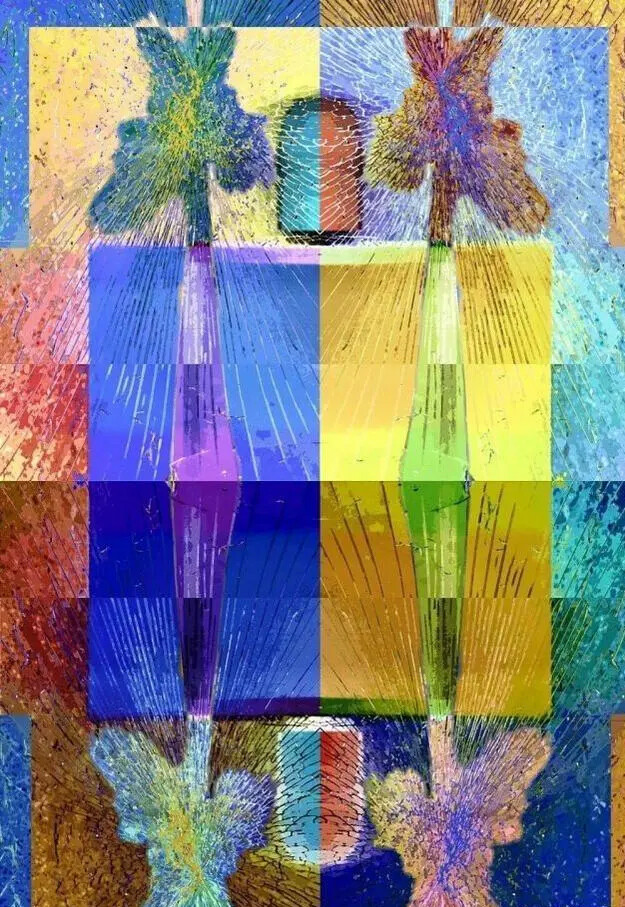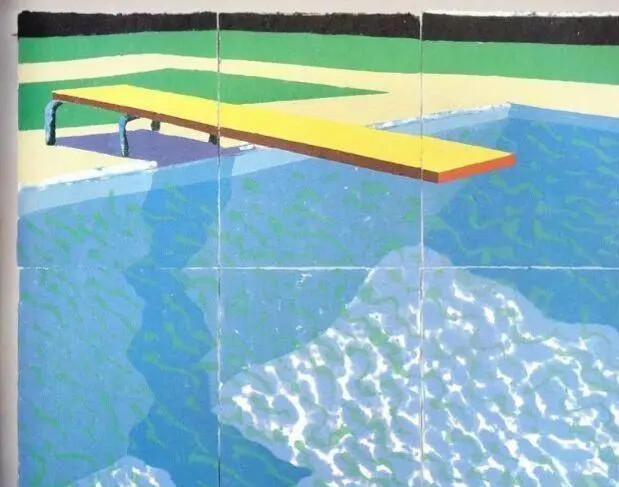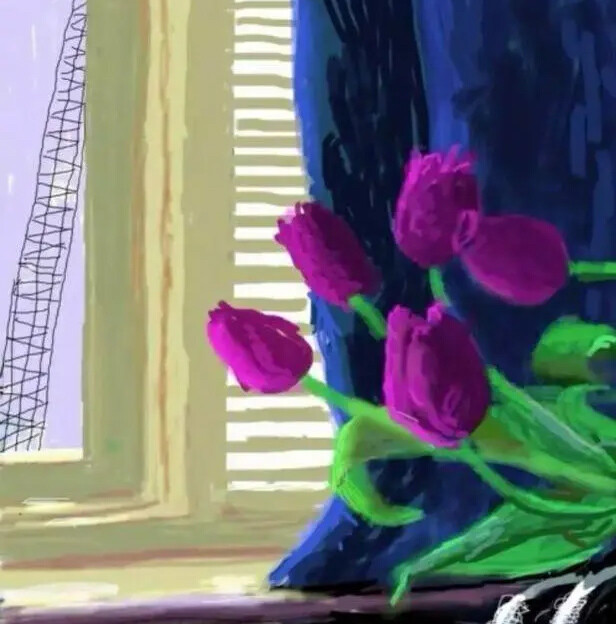A. Introduce the development of contemporary Chinese painting that integrates the essence of Western art with national cultural characteristics
As an important art field, Chinese contemporary painting has experienced a leapfrog development and transformation. Under the trend of globalization, Chinese artists and painters began to actively absorb the essence of Western art, explore and integrate different cultural traditions, and inject new vitality and creativity into Chinese contemporary painting. The influence of Western art on Chinese contemporary painting is obvious, and the changes in painting techniques, forms of expression and aesthetic concepts all show an open and inclusive attitude. The shadow of Western painting schools can be seen in Chinese contemporary paintings, such as Impressionism, expressionism, abstract art, etc. Artists constantly explore new ways of artistic expression through learning and learning from Western art, so as to make their works more modern and international.
At the same time, Chinese contemporary painting is also deeply influenced and influenced by national cultural characteristics. Chinese traditional culture has a long history, which contains rich philosophical thoughts, aesthetic ideas and artistic expression forms. Artists often incorporate traditional Chinese cultural elements in their creations, such as mountains, flowers and birds, and calligraphy, giving their works a unique Oriental charm and cultural connotation. This kind of integration is not a simple piling or imitation, but through the understanding and expression of traditional culture, it is integrated into the contemporary art context to form a unique national art style.

B. Put forward the research purpose and significance of the paper
The purpose of this paper is to deeply explore the unique charm and artistic style of Chinese contemporary painting in the process of integrating the essence of Western art with the characteristics of national culture. Through the analysis and interpretation of contemporary painting works, it reveals the internal relationship between fusion, inheritance and innovation, and probes into its unique position and role in cultural blending. Specific research objectives include:
In-depth analysis of Chinese contemporary painting works of Chinese and Western artistic elements and national cultural characteristics of the fusion, reveal its artistic expression and connotation.
This paper discusses the continuation and transformation of flatness in traditional Chinese painting and contemporary painting, and analyzes its importance and significance in artistic creation.
This paper analyzes the manifestation and aesthetic consciousness of national artistic characteristics in Chinese contemporary painting, and probes into its value and influence in the development of contemporary art.
It will show the unique position and creative path of Chinese contemporary painting in the integration of diverse cultures, and look forward to the development trend and future direction of Chinese contemporary art.

II. The influence of Western art on Chinese contemporary painting
A. The inspiration and reference of Western art to Chinese contemporary painting
Western art has exerted a profound influence on Chinese contemporary painting, providing Chinese artists with abundant artistic resources and creative ideas. First of all, the inspiration of Western art to Chinese contemporary painting lies in its open artistic concept and diversified forms of expression. By learning and borrowing from Western art, Chinese artists have broadened their horizons and enhanced their aesthetic awareness, enabling them to better grasp the pulse and trend of contemporary art. Western art emphasizes individual expression and free creation, and emphasizes the transmission of personal feelings and emotions, which provides a new artistic concept and expression mode for Chinese artists. They begin to pay more attention to self-expression and independent thinking, and dare to express their inner feelings and thoughts.
Secondly, Western art has given Chinese contemporary painting an important reference in painting techniques and forms of expression. For example, Chinese artists learned from Impressionism the use of light and shadow and the expression of color skills, making the works more three-dimensional and vivid. At the same time, abstract art has also had a profound influence on Chinese contemporary painting. By borrowing from and re-creating western abstract art, Chinese artists have integrated it into traditional Chinese cultural elements and formed a unique abstract style. This fusion not only enriches the expression of Chinese contemporary painting, but also provides a new aesthetic experience for the audience.

B. Analyze the use of Chinese and Western artistic elements in contemporary Chinese paintings
Chinese contemporary painting works use a variety of western art elements, showing a unique artistic charm and innovative spirit. In terms of painting techniques, Chinese artists have borrowed Western techniques such as perspective, light and shadow processing and color application to make their works more three-dimensional and visual impact. They are good at using the change of light and shadow and the contrast of colors to create an atmosphere and create a unique visual effect. In addition, Chinese artists also draw inspiration from Western realism and expressionism to make their works more vibrant and expressive through accurate depiction of details and expression of emotions.
In terms of artistic style, Chinese contemporary paintings combine abstract, realistic and decorative elements to form a diversified way of expression. Some Chinese artists have combined Western abstract art with traditional Chinese images and symbols to create a unique artistic language and symbol system. They express their inner emotions and visual impact by means of simplification, exaggeration and deformation, making their works more personalized and artistic. At the same time, Chinese artists also borrowed from Western decorative arts, using various patterns, textures and decorative elements to add rich layers and textures to their works.
In short, the influence of Western art on Chinese contemporary painting cannot be ignored. It not only enriches the artistic vision and creative ideas of Chinese artists, but also injects new vitality and innovative spirit into Chinese contemporary painting. By integrating the essence of Western art and the characteristics of national culture, Chinese contemporary painting shows its unique artistic style and aesthetic consciousness, and makes a positive contribution to the development of contemporary art. In the future, Chinese artists should continue to pay attention to and learn from Western art, and at the same time pay attention to integrating it into traditional Chinese culture, so as to achieve more diversified and rich artistic expression.
III. The embodiment of national spirit and traditional culture in Chinese contemporary painting
A. The influence of national spirit on contemporary painting art creation
Chinese national spirit is one of the important elements of Chinese contemporary painting, which has a profound influence on artistic creation. The national spirit emphasizes the unity, struggle and unremitting self-improvement of the people, and this spirit has been actively reflected in Chinese contemporary painting.
First of all, Chinese traditional culture contains rich national spirits, such as benevolence in Confucianism, the unity of heaven and man in Taoism, and compassion in Buddhism. These values are incorporated into contemporary paintings by artists, making the works more humane and socially responsible. By depicting people's lives, expressing social concerns and calling for justice, the artist shows the resilience and courage of the Chinese people in the face of challenges and difficulties.
Secondly, the Chinese national spirit pays attention to the inheritance and development of traditional culture. Through the study and application of traditional painting techniques, themes and images, Chinese artists have integrated traditional cultural elements into contemporary painting. For example, they used Chinese painting techniques, landscape artistic conception, flowers, birds, insects and fish and other elements, so that the works have distinct Chinese characteristics and national features. At the same time, artists also pay attention to the reinterpretation and innovation of traditional culture in order to meet the aesthetic needs and expressions of contemporary society.




